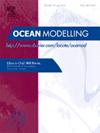Investigating appropriate artificial intelligence approaches to reliably predict coastal wave overtopping and identify process contributions
IF 2.9
3区 地球科学
Q2 METEOROLOGY & ATMOSPHERIC SCIENCES
引用次数: 0
Abstract
Predicting coastal wave overtopping is a significant challenge, exacerbated by climate change, increasing the frequency of severe flooding and rising sea levels. Digital twin technologies, which utilise artificial intelligence to mimic coastal processes and dynamics, may offer new opportunities to predict coastal wave overtopping and flooding reliably and computationally efficiently. This study investigates the effectiveness of training various artificial intelligence models using wave buoy, meteorological, and recorded coastal wave overtopping observations to predict the occurrence and frequency of overtopping at 10-minute intervals. These models have the potential for future large-scale global applications in estimating wave overtopping and flood forecasting, particularly in response to climate warming. The model types selected include machine-learning random forests, extreme gradient boosting, support vector machines, and deep-learning neural networks. These models were trained and tested using recorded observational overtopping events, to estimate wave overtopping and flood forecasting in Dawlish and Penzance (Southwest England). The random forests performed exceptionally well by accurately and precisely estimating coastal wave overtopping and non-overtopping 97 % of the time within both locations, outperforming the other models. Moreover, the random forest model outperforms existing process-based and EurOtop-based models. This research has profound implications for increasing preparedness and resilience to future coastal wave overtopping and flooding events by using these random forest models to predict overtopping and flood forecasting on wider global and climate scales. These trained random forests are significantly less computationally demanding than existing process-based models and can incorporate the important effect of wind on overtopping, which was neglected in existing empirical approaches.

研究适当的人工智能方法来可靠地预测海岸波浪过顶并确定过程贡献
预测沿海海浪的过顶是一项重大挑战,气候变化加剧了这一挑战,增加了严重洪水和海平面上升的频率。数字孪生技术利用人工智能模拟海岸过程和动态,可能为可靠和高效地预测海岸波浪过顶和洪水提供新的机会。本研究考察了利用波浪浮标、气象和记录的海岸波浪过顶观测数据训练各种人工智能模型的有效性,以每10分钟一次的间隔预测过顶的发生和频率。这些模式在未来的大规模全球应用中具有潜力,可用于估计波浪过顶和洪水预报,特别是在应对气候变暖方面。选择的模型类型包括机器学习随机森林、极端梯度增强、支持向量机和深度学习神经网络。这些模型经过训练和测试,使用记录的观测过顶事件来估计德力士和彭赞斯(英格兰西南部)的波浪过顶和洪水预报。随机森林模型在两个地点97%的时间内准确准确地估计了海岸波浪的过顶和非过顶,表现得特别好,优于其他模型。此外,随机森林模型优于现有的基于过程和基于eurotop的模型。通过使用这些随机森林模型在更广泛的全球和气候尺度上预测漫顶和洪水,本研究对提高对未来海岸波浪漫顶和洪水事件的准备和恢复能力具有深远的意义。与现有的基于过程的模型相比,这些经过训练的随机森林的计算需求明显减少,并且可以纳入风对过顶的重要影响,这在现有的经验方法中被忽略了。
本文章由计算机程序翻译,如有差异,请以英文原文为准。
求助全文
约1分钟内获得全文
求助全文
来源期刊

Ocean Modelling
地学-海洋学
CiteScore
5.50
自引率
9.40%
发文量
86
审稿时长
19.6 weeks
期刊介绍:
The main objective of Ocean Modelling is to provide rapid communication between those interested in ocean modelling, whether through direct observation, or through analytical, numerical or laboratory models, and including interactions between physical and biogeochemical or biological phenomena. Because of the intimate links between ocean and atmosphere, involvement of scientists interested in influences of either medium on the other is welcome. The journal has a wide scope and includes ocean-atmosphere interaction in various forms as well as pure ocean results. In addition to primary peer-reviewed papers, the journal provides review papers, preliminary communications, and discussions.
 求助内容:
求助内容: 应助结果提醒方式:
应助结果提醒方式:


